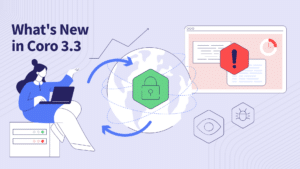Satellite communication systems are vital for our modern world. They provide critical infrastructure for communication, including our cell phone calls, internet access, television broadcasting and essential military operations. GPS (Global Positioning System) uses satellites to provide location and navigation services for everything from cars and airplanes to smartphones, while various scientific organizations use them to monitor weather patterns, track environmental changes, and provide valuable data for their research.
However, these vital systems are vulnerable to disruptions from two main sources: cyberattacks and solar weather events.
Solar Weather Disruptions and Cybersecurity Threats
The sun constantly emits charged particles and radiation. During solar flares and coronal mass ejections (CMEs), these emissions intensify and can disrupt satellites and other electronic systems. The intensity of these events varies, but a powerful solar storm could potentially knock out entire satellite networks for extended periods.
This was the case during the May 2024 solar storm. According to 404 Media, farmers dependent on GPS readings to guide their tractors were forced to cease their work during a crucial part of the planting season.
That’s one example of a naturally-occurring event hamstringing satellite communications. Since this is a website focused on cybersecurity, you can probably tell where this is going.
Nation-states are increasingly targeting satellite communication systems with cyberattacks. These attacks can take several forms:
- Hacking ground stations: Cybercriminals could gain access to the ground stations that control satellites, potentially disabling them or manipulating data transmissions.
- Jamming satellite signals: Attackers could use powerful radio signals to interfere with the communication between satellites and ground stations, disrupting services.
- Malware infection: Malicious software could be uploaded to satellites, potentially taking control of their functions or stealing sensitive data.
The 2022 cyberattack targeting Viasat—a satellite internet provider in Ukraine—is a real-world example. This attack, believed to be backed by Russia, disrupted internet access for thousands of people during the invasion. Around the same time, Russia also began targeting Starlink, the satellite internet service operated by SpaceX, as it’s heavily leveraged by the Ukrainian military. Apparently, Russia was using custom malware to target Android devices to tap into Starlink satellite data to gain access to sensitive information.
You can bet we’re going to see more of these threats to satellites going forward, but there are some things that can be done in the meantime.
How to Better Protect Satellites
Protecting satellites requires a multi-layered approach that addresses vulnerabilities across three distinct technology layers:
1. Ground Systems
Here, data processing and information dissemination occur. These ground stations are also the most susceptible to cyberattacks due to their inherent accessibility. Stronger authentication methods, secure technology design, and adherence to cybersecurity best practices are crucial for defense.
2. Communication Links
The communication channels connecting ground systems and orbiting satellites require robust encryption to safeguard against jamming or spoofing (disguising a signal as a legitimate source). This ensures the integrity and security of data transmission.
3. Onboard Equipment
Satellites themselves face threats not only from cyberattacks but also from the harsh space environment. Establishing international norms to prevent debris-causing activities in space is essential to minimize physical damage. Upgrading satellites during their operational lifespan can be challenging, but innovative solutions are required to address obsolescence, especially with advancements in fields like post-quantum cryptography.
A Collaborative Approach
At the moment, there aren’t consistent national cybersecurity standards for space systems (indeed, we’re just getting around to creating ones for certain parts of Earth), creating an uneven playing field.
Companies are left to interpret and implement varying security measures, creating vulnerabilities. However, positive steps are underway.
According to GovTech, a federal interagency committee in the US is developing minimum cybersecurity requirements for government-procured space systems, expected to be released in summer 2024. Beyond that, an implementation plan for the Space Policy Directive-5 is being developed, which outlines key space system cybersecurity principles.
In the meantime, safeguarding satellites demands a collaborative effort between governments and the private sector. Space technology is often developed by private companies, which just highlights the need for open communication.
Companies should share details about emerging threats, whether naturally occurring or cyber attacks, while governments can provide actionable intelligence based on their broader knowledge. Initiatives like the Space Information Sharing and Analysis Center (Space ISAC) can facilitate the exchange of threat intelligence across public and private stakeholders in the space domain.
Traditionally, cybersecurity threats have been addressed within individual organizations—be it government agencies, private space companies, or research institutions. However, the space industry is a complex ecosystem where public and private entities work together on critical infrastructure. Space ISAC bridges this gap by creating a platform where all stakeholders can share information and resources.
By sharing information about threats, all participants gain a broader understanding of the cyber threat landscape in the space domain. This allows them to take preventative measures and improve their defenses. Stakeholders can also identify new threats more quickly, allowing for a more coordinated response, minimizing potential damage and disruption.
The Space ISAC offers a variety of resources to its members, including:
- Threat Alerts and Indicators: They distribute timely alerts about emerging cyber threats targeting space systems. This allows members to take immediate action to protect their assets.
- Vulnerability Assessments: Space ISAC conducts vulnerability assessments to identify weaknesses in space infrastructure and technologies. This proactive approach helps prioritize security efforts and address potential risks.
- Cybersecurity Training: They offer training programs to educate stakeholders on cyber threats and best practices for space cybersecurity. This helps build a skilled workforce capable of defending critical space assets.
Looking ahead
Solar events like flares and coronal mass ejections (CMEs) pose a significant threat to satellites, as do malicious cyber attacks. Governments need to prioritize early warning systems for solar activity and nation-state threats. This allows for preventative measures to be taken, potentially minimizing damage to satellites and ensuring continued operation.
By addressing vulnerabilities across all three tech layers, fostering collaboration between governments and industry, and establishing standardized cybersecurity protocols, we can build a more resilient space ecosystem.

















